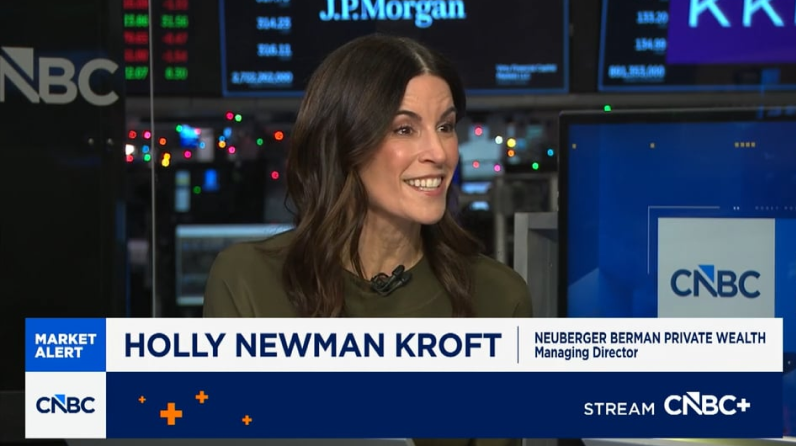

The pivot that the Fed embarked on in November appears to still be in place and there is a desire to maintain economic momentum and to adopt easier monetary policy over the course of 2024.
Yesterday, the Federal Reserve (Fed) announced no change in the target range of the federal funds rate of 5.25 – 5.50% for the fifth straight meeting. While this was expected, we believe the importance of this particular meeting increased significantly over the last eight weeks as a flurry of somewhat conflicting economic data pointed to the need for greater clarity coming out of the Federal Open Market Committee (FOMC).
The widely reported, hotter-than-anticipated U.S. inflation prints for January and February coupled with continued strong non-farm payroll readings—tempered in part by an uptick in unemployment—have moved expectations for federal funds rate cuts from six to three in a matter of a few weeks. There was also some concern that expectations would need to move even lower based on the Fed’s restatement of the dot plot. In fact, the Fed maintained expectations for three rate cuts this year, implying a target funds rate of 4.6% by the end of 2024. However, the dot plot does reflect one less rate cut in 2025, for a year-end target of 3.9%; this perhaps reflects an assumption that economic growth is more sustainable. The most notable change came from the longer end of the dot plot, as Fed officials see the long-term level of rates settling at 2.6%, from 2.5%, which could be interpreted as an acknowledgment that shifting economic dynamics imply a higher longer-term neutral rate.
As for the economy, in the Summary of Economic Projections, forecasts for GDP growth in 2024 and 2025 increased to 2.1% and 2.0%, respectively, from 1.4% and 1.8%. In addition, core PCE is now expected to fall to 2.6% by the end of 2024 and 2.2% by the end of 2025 while the 2024 estimate increased from 2.4%. As for unemployment, the Fed expects to close this year at an unemployment rate of 4.0%, down slightly from the December report, with unemployment reaching 4.1% by the end of 2025. When combining these new estimates, it is evident that the Fed acknowledged the recent uptick in inflation and other underlying measures in its expectations, but that recent data was not impactful enough to undercut the confidence that has already been built up to support rate cuts this year. We believe there are four important takeaways from yesterday.
First, during the press conference, Chairman Powell reiterated that the Fed remains committed to the 2% inflation target and that decisions to move toward more accommodative policy will be based on data. Powell appeared to want to avoid laying out a prescriptive timeline for cuts. While he admitted that the first cut was an important step, he attempted to downplay the notion that one cut would be followed by multiple cuts at predetermined intervals.
Second, Powell addressed the stickiness of shelter prices, acknowledging the slow pace of improvement in the underlying measures of shelter prices that feed into CPI and PCE. However, he also acknowledged the more recent softening of current rents, which he believes will begin to affect the shelter component, although the timing of that is difficult to pinpoint.
Third, Powell opened the door for the labor market to remain strong without triggering renewed concerns about wage growth. He stated that he does not believe that wages were the primary driver of the inflationary surge and that while non-farm payrolls have grown at a robust pace, demand has been better met by supply more recently. He also cited the influx of new workers as the potential for continued growth in consumer spending, thus fueling the U.S. economy at large.
Finally, Fed Chairman Jerome Powell stated that while there were no changes in balance sheet management in this meeting, he admitted that the FOMC is likely to slow the pace of balance sheet runoff “fairly soon”; however, he noted that it is the belief of the FOMC that slowing the pace of the runoff could eventually result in a greater reduction of the Fed’s bond holdings.
In summary, equity and bond investors likely exhaled a sigh of relief as the press conference ended; the pivot that the Fed embarked on in November appears to still be in place and there is a desire to maintain economic momentum and to adopt easier monetary policy over the course of 2024. In terms of reaction, equity markets traded higher following the statement and the gains accelerated throughout the press conference while bond yields fell modestly as well. Fed expectations, according to the CME FedWatch Tool, moved on today’s news: the probability of a rate cut in June now sits at 68%, up from 56% yesterday. We remain positioned for slowing yet still positive economic growth, consistent with the Fed’s outlook, and continue to recommend a rotation from cash and short duration fixed income positions to longer duration fixed income, equities and private market strategies given the probability of a decrease in short-term yields over the course of the year.


INSIGHTS
CIO Notebook: December CPI Softer but Unlikely to Change the Course

Accolades
The 2026 Forbes | SHOOK Best-In-State Wealth Management Teams list

INSIGHTS
CIO Notebook: Sluggish Job Growth Points to Steady Rates, For Now

MARKET COMMENTARY
Taking Stock of 2025

VIDEO
Holly Newman Kroft Featured on CNBC’s Money Movers December 18

VIDEO
The Kantor Group | Charles Kantor’s Year-End Reflections and Key Questions as We Head Into 2026

INSIGHTS
CIO Notebook: Dual Release of Delayed Non-Farm Payrolls Likely Supports Another Cut
INSIGHTS
Using Tax-Free Gifts for Wealth Transfer
INSIGHTS
CIO Notebook: Powell Plays the Middle as Fed Cuts Rates
MARKET COMMENTARY
Giving Thanks for Market Strength
INSIGHTS
CIO Notebook: September U.S. Non-Farm Payrolls Further Complicate the Narrative
VIDEO
Holly Newman Kroft Featured on CNBC’s Money Movers November 18
VIDEO
Plan for Peace of Mind with Our Estate Planning Organizer
IMPORTANT INFORMATION:
This material is provided for informational purposes only and nothing herein constitutes investment, legal, accounting or tax advice, or a recommendation to buy, sell or hold a security. This material is general in nature and is not directed to any category of investors and should not be regarded as individualized, a recommendation, investment advice or a suggestion to engage in or refrain from any investment-related course of action. Any views or opinions expressed may not reflect those of the firm as a whole. Neuberger Berman products and services may not be available in all jurisdictions or to all client types. Diversification does not guarantee profit or protect against loss in declining markets. Investing entails risks, including possible loss of principal. Investments in private equity are speculative and involve a higher degree of risk than more traditional investments. Investments in private equity are intended for sophisticated investors only. Unless otherwise indicated, returns shown reflect reinvestment of dividends and distributions. Indexes are unmanaged and are not available for direct investment. Investing entails risks, including possible loss of principal. Past performance is no guarantee of future results.
Portfolio positioning views expressed herein are those of Neuberger Berman’s Private Wealth Investment Group, which may include those of the Neuberger Berman’s Asset Allocation Committee. Asset allocation and positioning views are based on a hypothetical reference portfolio. The Private Wealth Investment Group analyzes market and economic indicators to develop asset allocation strategies. The Private Wealth Investment Group works in partnership with the Office of the CIO. The Private Wealth Investment Group also consults regularly with portfolio managers and investment officers across the firm. The Asset Allocation Committee is comprised of professionals across multiple disciplines, including equity and fixed income strategists and portfolio managers. The Asset Allocation Committee reviews and sets long-term asset allocation models, establishes preferred near-term tactical asset class allocations and, upon request, reviews asset allocations for large, diversified mandates. Asset Allocation Committee members are polled on asset classes and the positional views are representative of an Asset Allocation Committee consensus. The views of the Asset Allocation Committee and the Private Wealth Investment Group may not reflect the views of the firm as a whole and Neuberger Berman advisers and portfolio managers may take contrary positions to the views of the Asset Allocation Committee or the Private Wealth Investment Group. The Asset Allocation Committee and the Private Wealth Investment Group views do not constitute a prediction or projection of future events or future market behavior. Defensive positioning generally means an underweight bias on allocations to risk assets such as equities and alternatives. Positioning views may change over time without notice and actual client positioning may vary significantly. Discussion of yield characteristics or total returns of different asset classes are for illustrative purposes only. Such asset classes, such as equities and fixed income, may have significantly different overall risk-return characteristics which should be consider before investing.
The information in this material may contain projections, market outlooks or other forward-looking statements regarding future events, including economic, asset class and market outlooks or expectations, and is only current as of the date indicated. There is no assurance that such events, outlook and expectations will be achieved, and actual results may be significantly different than that shown here. The duration and characteristics of past market/economic cycles and market behavior, including any bull/bear markets, is no indication of the duration and characteristics of any current or future be market/economic cycles or behavior. Information on historical observations about asset or sub-asset classes is not intended to represent or predict future events. Historical trends do not imply, forecast or guarantee future results. Information is based on current views and market conditions, which will fluctuate and may be superseded by subsequent market events or for other reasons.
Discussions of any specific sectors and companies are for informational purposes only. This material is not intended as a formal research report and should not be relied upon as a basis for making an investment decision. The firm, its employees and advisory accounts may hold positions of any companies discussed. Nothing herein constitutes a recommendation to buy, sell or hold a security. It should not be assumed that any investments in securities, companies, sectors or markets identified and described were or will be profitable. Investment decisions and the appropriateness of this content should be made based on an investor's individual objectives and circumstances and in consultation with his or her advisors.
Neuberger Berman Investment Advisers LLC is a registered investment adviser.
The “Neuberger Berman” name and logo are registered service marks of Neuberger Berman Group LLC